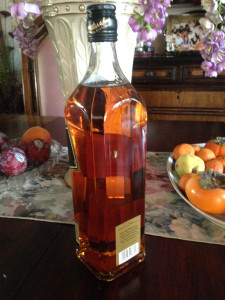Nutrient Labeling for Alcohol: Do We Even Want to know?
Word has been stirring of nutrition labels being added to alcoholic beverages. It’s about time the FDA has shed some light on the caloric content of alcoholic beverages that to some are consumed on a regular basis. Though moderate consumption of wine has some benefits, alcohol in general contributes very little to your healthy lifestyle.
Companies like Smirnoff and Guinness are jumping on the bandwagon by being the first to add the nutrient facts label to their brand. Even Crown Royal Canadian Whiskey is beginning to present nutrition facts on the boxes that contain their product. The nutrition facts will contain calories, carbs, fats and protein.
It’s true adding such information on alcoholic beverages may be scarier than your neighbors Halloween decorations. But the nutritional content- or lack thereof- in alcoholic beverages should not be kept in the dark any longer. Alcohol contains a significant amount of calories in a small serving. Consuming a few cocktails throughout the night could easily add on 500 calories to your regular calorie consumption in a regular day. Instead of ignoring it, it’s time to accept the reality.
The calories in alcoholic beverages are not nutrient dense. They serve little if any benefit to your health. For this reason alcohol is generally considered “empty” calories. Unfortunately, these calories add up- and they add up quickly. Just to get an idea, 3 five-ounce glasses of wine 3 nights a week is about 400 extra calories per night, which adds up to 1200 calories added for the week. This is something to consider if you’re paying attention to what you’re eating but not being conscious of what you’re drinking.
Under the Alcohol and Tobacco Tax and Trade Bureau (TTB), alcohol companies were not allowed to place these nutrient facts on their labels. But, in 2013, the agency accepted the request to allow voluntary labeling.
The executive vice president of Diageo North America, Guy Smith, is completely engulfing this opportunity. Smith claims that research suggests consumers have long wanted nutrition information on alcohol.
While some companies may dislike this idea, other’s, like Smith, are all for it. Consumers have urged the TTB agency to not only allow voluntary labeling but to require it. Do all consumers feel this way? Do we really want to know what is in the alcohol that we as Americans so casually consume? Perhaps we should know.
Alcohol has proven to affect blood sugar. It has been shown that small consumption of alcohol elevates insulin secretion, which causes low blood sugar or hypoglycemia. This effect can damage the hormone response that should normally correct the low blood sugar. When consuming alcohol on an empty stomach, blood sugar can decrease immensely which can be dangerous.
According to the US Department of Health and Human Services, moderate alcohol consumption is considered 1 drink per day for women and 2 drinks per day for men. I think the point of this label is to make people more conscious of the caloric effects of drinking alcoholic beverages.
Your turn to take action: if you are a drinker, next time you are in the liquor store, see if you can find any companies that present nutrition labels.



Leave a Reply
Want to join the discussion?Feel free to contribute!